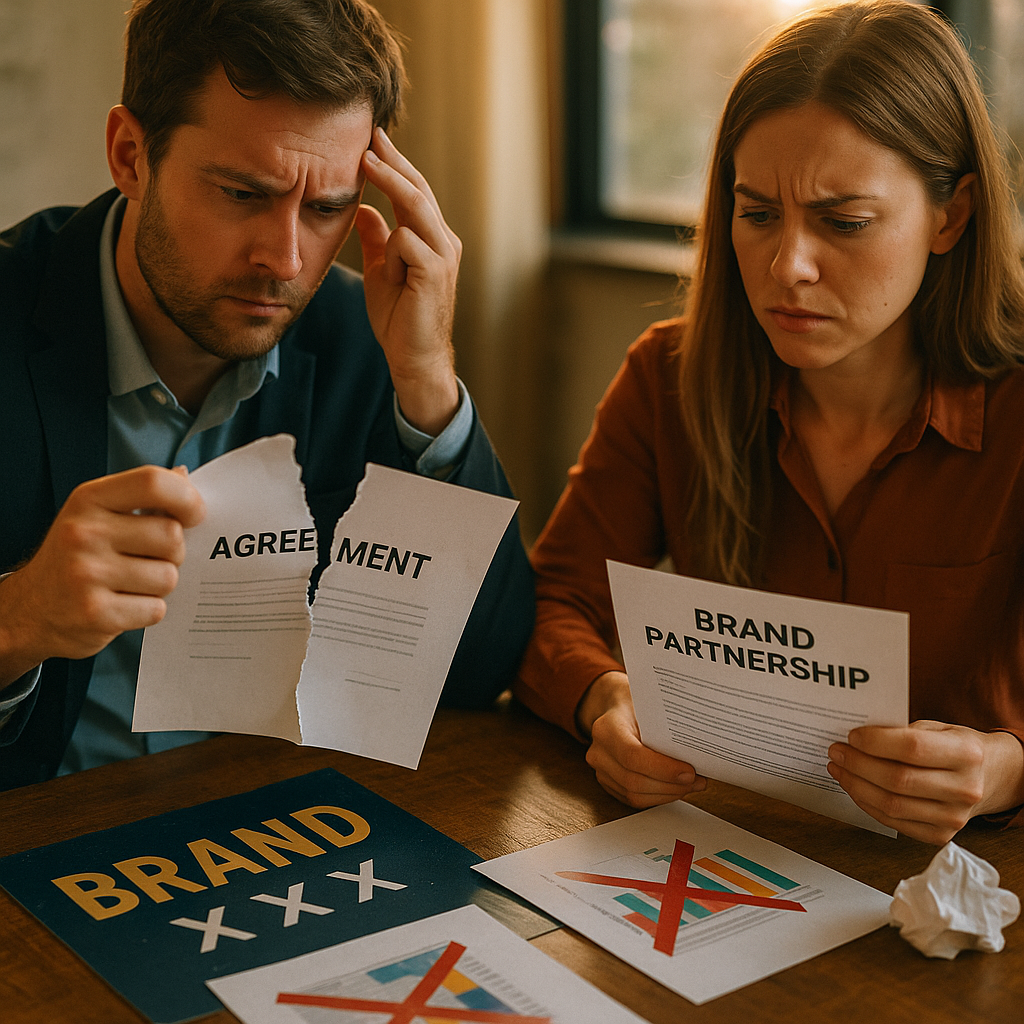Brand partnerships can supercharge growth, but a major post-mortem in 2025 reminds marketers of a key pitfall: a brand collaboration that was a mismatch in values and audience. How did two iconic brands lose consumer trust so quickly? Learn what went wrong, and how your business can avoid these costly collaboration mistakes.
Understanding Brand Collaboration Failure: Core Brand Values Clash
At the heart of any successful brand collaboration is an alignment of core values. When two brands partner, their underlying philosophies and missions must complement each other. In 2025, a misaligned collaboration highlighted how critical this alignment really is. One brand, rooted in social responsibility, joined forces with another known for fast fashion and profit-driven strategies. The disconnect was immediate and glaring.
Audiences, increasingly savvy and attuned to authenticity, spotted this values clash. The campaign messaging felt hollow, and what should have been a celebration of shared purpose instead became a cautionary tale. Recent consumer research by the Global Brand Study Group shows that 78% of customers expect co-branded campaigns to reflect consistent ethical stances. When brands fail this test, loyalty erodes rapidly.
Audience Mismatch: Overlapping Isn’t Enough
Ideally, a brand partnership taps into mutually beneficial audiences. But in this failed 2025 campaign, the audience profiles only overlapped superficially. The first brand’s followers valued sustainability and ethical manufacturing, while the second’s market prized affordability and frequent new releases. The resulting campaign tried to please both—which only led to confusion and disgruntlement.
Segmentation data revealed that less than 15% of each audience trusted the other brand. This sort of data-driven insight should have raised concerns during initial partnership talks. Key lesson: It’s not enough to share demographics. You must also assess psychographics—values, passions, and purchasing motivations—to ensure audience synergy in collaborations.
EEAT in Action: Authenticity and Trust Matter in Brand Collaborations
EEAT—Experience, Expertise, Authority, and Trust—should underpin all brand strategies, especially collaborations. Unfortunately, the ill-fated 2025 partnership failed on several counts. Interviews with marketing leaders show that audiences perceived the campaign as lacking real expertise and experience in the shared product category. Both brands seemed out of their element, diluting their respective authorities.
Trust, the final pillar, suffered most. Within weeks, social media sentiment dropped by over 40% for both brands, according to InfluencerTracker 2025. Authentic collaborations demonstrate expertise, build authority, and ultimately, elevate trust. When partners stretch too far beyond their credibility, customers notice and disengage.
Consequences of a Failed Brand Collaboration: Reputation and Revenue Damage
The repercussions from mismatched collaborations extend beyond short-term disappointment. For the brands involved, the impact in 2025 was quantifiable and painful. Investor calls cited a 13% drop in quarterly revenue directly linked to customer attrition post-campaign. Media outlets labeled the partnership an “exercise in brand dilution.”
Perhaps more damaging was the lasting reputation hit. Employees and longtime customers voiced disappointment. Recruitment metrics declined, and both brands faced increased scrutiny on subsequent campaigns. These outcomes demonstrate how vital it is to perform due diligence before launching joint initiatives.
How to Vet Brand Partners: Lessons from the 2025 Post-Mortem
What can brands learn from this collaboration post-mortem? Impeccable vetting processes are essential. Brand managers should:
- Align on mission and values: Develop a shared statement of purpose for the collaboration.
- Analyze audience compatibility: Use advanced segmentation and social listening tools to identify true overlap in values and motivations.
- Scrutinize brand reputation: Review recent sentiment and public statements for alignment.
- Conduct small-scale tests: Pilot campaigns before full rollouts can surface friction points.
- Establish transparent communication: Regular, honest dialogue between cross-functional teams prevents missteps and fosters trust.
Brand partnerships are high-stakes. Proper vetting minimizes mismatch risk and sets the stage for genuine, sustainable growth.
Recovering From a Failed Collaboration: Earn Back Trust Strategically
Once a collaboration fails, recovery takes time and intentional action. In 2025, experts recommend several trust-rebuilding strategies:
- Publicly acknowledge missteps: Transparent communication shows accountability and signals a willingness to learn.
- Re-focus on core identity: Return to your brand’s strengths and reaffirm commitments to your values and audience.
- Solicit community feedback: Listening sessions and surveys can identify what matters most and guide future initiatives.
- Invest in credibility-building actions: Double down on expertise and thought leadership within the brand’s established domain.
Restoring trust after a failed collaboration requires humility, openness, and a clear recommitment to what makes your brand unique.
FAQs: Navigating Mismatched Brand Collaborations
-
What are the main signs a brand collaboration is a mismatch?
Key signs include clashing brand values, inconsistent campaign messaging, low cross-audience trust, and negative social media sentiment soon after launch. -
Can mismatched collaborations ever be salvaged mid-campaign?
Salvage is difficult. Honest communication and swift campaign pivots can help, but often, it’s best to pause and reassess before further damage occurs. -
How long does it take to recover brand trust after a failed collaboration?
Timelines vary, but most brands see measurable improvement within 9-18 months after implementing trust-restoration strategies and authentic public outreach. -
How can brands predict audience compatibility ahead of partnerships?
Use robust data analysis—beyond demographics, including psychographics, buying motivators, and sentiment tracking—to anticipate fit and potential challenges. -
Should brands avoid collaborations altogether?
No. Collaborations offer major growth opportunities, but demand rigorous vetting, value alignment, and thoughtful audience analysis to ensure success and avoid pitfalls.
The 2025 post-mortem on a brand collaboration that was a mismatch in values and audience underscores the need for rigorous partner vetting and audience analysis. Aligning on core values—and truly understanding your customer base—are non-negotiable for collaborations that drive growth, trust, and lasting brand equity.
